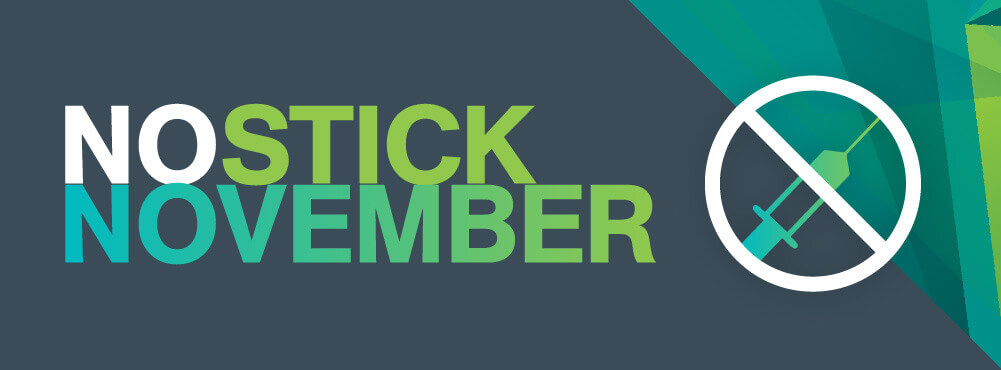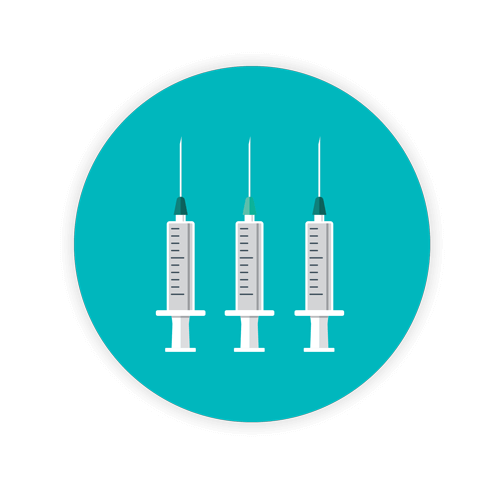#NoStickNovember and Onward

We don’t want #NoStickNovember to be like your New Year’s Resolution to stop eating bread or watching bad reality television shows—we want it to be something you observe the whole year. #NoSticksEver.
If you work in a healthcare facility, chances are you know a sharps-injury survivor. You may think to yourself, “They were fine—what’s the big deal?” Much like any injury, it’s hard to fully comprehend until it happens to you or someone you love. A sharps injury wreaks havoc on victims by causing prolonged emotional trauma while awaiting test results, mounting medical bills, and often unjust judgement from their peers that the injury was their own fault.
We ask those of you in healthcare to think about what you’ve done for #NoStickNovember to increase your safety and reduce the chance of sharps-related injuries. Not what you thought about doing, but what you really did. We can wish all day long for sharps-injuries to stop but unless we take action, and chance our methods, the risk will continue.
An ounce of action is worth a ton of theory.
Ralph Waldo Emerson
If you missed out on #NoStickNovember with Daniels Health, don’t worry—every day is a day for us to help prevent sharps injuries. There’s a reason why our slogan is “Making Healthcare Safer.”
Be a champion of healthcare. You are your best advocate and can create small changes that have a big impact, here are some resources you can use for the rest of this month and the months to come that will aid in improving safety at your facility.
It’s Not Ok
 Read and share our interview with former president of the American Nurses Association and needle stick injury survivor, Karen Daley.Through her powerful testimony, she provides a look into of how her life was forever changed from a sharps-injury at the height of her career. Following her injury, she had to learn how to continue life with a new challenge: HIV and Hepatitis C. Karen persevered and is now an avid champion for safety of healthcare workers and patients when it comes to sharps-related injuries. Karen’s work has also been published in countless research journals—it is a great resource for additional education on sharps-injuries.
Read and share our interview with former president of the American Nurses Association and needle stick injury survivor, Karen Daley.Through her powerful testimony, she provides a look into of how her life was forever changed from a sharps-injury at the height of her career. Following her injury, she had to learn how to continue life with a new challenge: HIV and Hepatitis C. Karen persevered and is now an avid champion for safety of healthcare workers and patients when it comes to sharps-related injuries. Karen’s work has also been published in countless research journals—it is a great resource for additional education on sharps-injuries.
Historical Trends and Improvements in Sharps Injury Reduction
Research elaborating on the causes and effects of a sharps injury for healthcare workers. Terry Grimmond, microbiologist, offers his insights on how this international healthcare issue can be reduced, we learn about the new legislation and options for sharps containers.
Downloadable Educational Resources:
- What is Sharps Waste? What are segregation best practices, and what are sharps waste disposal methods? Find out with this quick guide to sharps waste categorization.
- How to Prevent Sharps Injuries Poster. Sharps injuries (SI) may result in exposure to any of 60 different pathogens including HIV, HBV or HCV, and recent surveys confirm that SI are a persistent and challenging problem. This educational poster serves as a guide on how to prevent sharps injuries.
- Sharps Container Checklist. This 139-item checklist is designed as the ultimate guide to choosing a sharps disposal container. Outlining requirements set by the FDA, DOT, OSHA NIOSH and U.S. Standards, this guide acts as a checklist for evaluating how safe and compliant a sharps disposal container is against US requirements.
Arm yourself with knowledge—how are you going to influence others in their daily practice that will help reduce the risk of sharps injuries and infection transfer? You can help make healthcare safer too—we can’t do it alone.
Let's Talk!
Your time is valuable, and we don’t want to play hard to get. You can either phone us directly on the details listed on our contact page, or feel free to fill out this short form and one of our team members will get back to you as quickly as possible.
